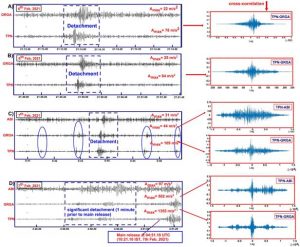 PIB Delhi – Little more than a year after the deadly ice-rock mass avalanche in Chamoli district in the Uttarakhand state that led to a significant causality of more than 200 people and a substantial economic loss scientists have been able to decode the reason behind the disaster. The scientists have found that the region was seismically active before the disaster hit. They also found a noteworthy sequence of precursory signals of rock-ice detachment preceded by a formation of a new structure via self-assembly or self-organization called the dynamic nucleation phase.
PIB Delhi – Little more than a year after the deadly ice-rock mass avalanche in Chamoli district in the Uttarakhand state that led to a significant causality of more than 200 people and a substantial economic loss scientists have been able to decode the reason behind the disaster. The scientists have found that the region was seismically active before the disaster hit. They also found a noteworthy sequence of precursory signals of rock-ice detachment preceded by a formation of a new structure via self-assembly or self-organization called the dynamic nucleation phase.
Retreating Himalayan glaciers and associated melt along with unstable slopes are subject to trigger landslides by rainfall during monsoon or by induced seismicity in the region. Also, the snow, ice and rock avalanches may threaten people and infrastructure downstream in mountainous areas worldwide. This is why the area requires constant monitoring of seismicity as well as glacier status. Wadia Institute of Himalayan Geology (WIHG), since its inception, has been actively involved in understanding the processes responsible behind such disaster and focusing on detecting significant and unfelt activities with a dense network of seismic stations in the vicinity of Himalayan glaciers. As a part of this process they have also tried to trace the reasons behind the disaster that took place on February 7 2021,
The group of 9 scientists analysed the satellite images of the avalanche zone and found that it shows gradual growth of cracks and the joint near the crown of the weak wedge that has controlled the head scarp for the last 5 years. These cracks further started to open up and led to successive advancement of a weak zone near the crown of the wedge failure. The initiation of ice-rock mass avalanche has been recorded as seismic precursors, which were continuously active for 2.30 Hr, before the main detachment took place. Scientists analyzed and verified the seismic signals with field evidence to evaluate the velocity of dynamic flows and associated impacts. Such high-quality seismic data allowed to reconstruct the complete chronological sequence and evaluate effects since the initiation to the advancement of debris flow. The study has been published in the journal Scientific Reports.




